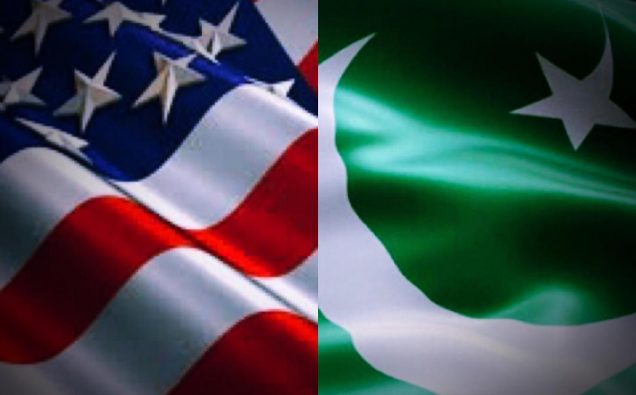
As U.S. President Donald Trump and Pakistani Prime Minister Imran Khan meet at the White House on Sunday, July 22, a cautionary tale, great-power politics, and deft diplomacy will be at play. Washington’s agenda will clearly focus on countering terrorism and violent extremism. Equally crucial is ensuring long-term peace and stability in Afghanistan. Eighteen years after the instigation of the Global War on Terror (GWOT), the new banner Operation Freedom’s Sentinel (OFS), adopted in 2015, has become a major challenge for the United States and her NATO (North Atlantic Treaty Organization) allies.
Afghan Peace Process
After massive expenditures, both in terms of men and material, the U.S. has learned that peace in Afghanistan and the broader South Asia region is not possible without engaging and bringing the Taliban back to the state politics. In order to bring an end to the protracted armed conflict in Afghanistan, President Donald Trump in December 2018 penned a letter to Prime Minister Imran Khan asking for his government’s assistance and cooperation in advancing peace talks with the Afghan Taliban insurgents and bringing them to the negotiating table.
As the U.S. hopes that a peace accord can be reached by September 1, seven rounds of painstaking negotiations between the U.S. and Taliban have been held since October 2018 in Doha, Qatar. The two sides had agreed upon a “draft framework” in the previous rounds. The latest round focused on four key issues: a Taliban guarantee that it will not allow fighters to use Afghanistan to launch attacks outside the country, the withdrawal of U.S. and NATO forces, an intra-Afghan dialogue, and a permanent ceasefire. The U.S. Secretary of State Mike Pompeo on Tuesday briefly visited the Afghan capital Kabul on an unannounced trip to the insurgency-riddled country.
Secretary Pompeo emphasized on the need for “credible elections” in Afghanistan, with productive discussions on the Afghan peace process, inclusive politics, and a greater role for women in the political-peace processes. The U.S. Special Representative for Afghanistan Reconciliation, Zalmay Khalilzad reiterated that the aim behind the ongoing peace talks with the Taliban is a comprehensive peace deal, not a withdrawal agreement. Separate meetings in Moscow and Kabul have been held to further the talks between politicians and ethno-tribal-religious leaders. However, peace has been a farfetched notion since the inception of talks. As Afghan peace initiatives make news headlines, there are still deep divisions within the central government and politicians’ endeavors to establish peace in Afghanistan are still obscure.
The Islamic State’s local franchise in Afghanistan and Pakistan, the Islamic State in Khorasan Province (ISKP), or Daesh, is in the center stage due to the discussion on the Taliban’s commitment that Afghan territory would not be used by international “terror” groups and that a ceasefire would be implemented across the country. While the Taliban militant group continues to attack the Afghan and U.S. targets, some of its long-time warring parties have sifted their angle towards Daesh in order to clean up the Daesh areas under their respective belts. However, the Taliban-U.S. peace talks have demoralized the Taliban foot soldiers a ) who have no understanding of the peace talks, and b) whose whole cause against the United States and western forces is sabotaged because of the talks; therefore, they have started to join the Daesh ranks.
The historic context of Pakistan and Afghanistan, as well as the relations between the two countries, has been perilous in the mushrooming dynamics of the South Asia region. Both countries have been penduluming on razor’s edge in mutual suspicions, but the fact remains valid that both are geographically and geopolitically contagious and hem in enormously resilient social, cultural, religious, ethnic, and economic links.
The United States recognizes that long-lasting peace and stability in Afghanistan are directly linked to Pakistan through an “Afghan-led and Afghan-owned peace process” instead of the clichéd “Pakistan should do more” warnings. However, the Trump administration, through deft diplomacy, can persuade Pakistan to press the Taliban for a cease-fire agreement and hold direct talks with the Afghan government. At the same time, the U.S. can make Pakistan vital to the peace agreement, its sustainable implementation, and sustainable ownership. “The convergence of Pakistan’s and the U.S. policy on Afghanistan has rekindled hope for resolution of the protracted Afghan conflict,” Shah Mahmood Qureshi, Pakistan’s foreign minister, said Tuesday.
Countering Terrorism and Mutual Gains
A few recent events helped paved the way for Prime Minister Imran Khan’s meeting with President Trump at the White House: 1) The U.S.-Pakistan “convergence,” highlighted by mutual gains; 2) Pakistan’s arrest this week of Hafiz Muhammad Saeed, the mastermind of the Mumbai terror attacks and the founder of the Lashkar-e-Taiba (LeT), a proscribed militant organization operating in South Asia, with a USD $10 million bounty on his head, long wanted by the U.S. and India; 3) the U.S. declaration of the Balochistan Liberation Army (BLA) as a global terrorist organization on July 2 (something Pakistan had been long calling for and has called it her diplomatic victory).
Hinging on mutual gains, Pakistan can ask President Trump to play a role in resuming talks with India, especially in wake of Hafiz Saeed’s arrest. However, this wasn’t the first time Saeed has been arrested or detained; his arrests and detentions have taken place at least eight times since 2001. The question remains: will Islamabad keep employing Hafiz Saeed as her strategic asset, or will he be tried and sentenced for his terrorist activities this time? If Pakistan is to earn true diplomatic gains with the U.S. and ‘reset her bilateral relationship,’ Hafiz Saeed’s arrest has to be for real. “We want to take forward an environment of trust and cooperation that has developed between the two countries from a low point in the ties,” Shah Mehmood Qureshi said on Friday.
Violent Extremism
Violent extremism continues to plague Pakistan. The country’s former president, Muhammad Zia-ul-Haq, a hard-line Deobandi Sunni who ruled for more than a decade, infested Pakistan with a program of Islamization and sowed the seeds of violent extremism. Over the decades, Pakistan has been disfigured as the lines blurred between nationalist and Islamist politics, and as good governance gave way to a fixation on the rivalry with India and the military’s narrative of patriotism. It seems the current military leadership in Rawalpindi has done some cost-benefit analysis. Since Pakistan’s inception, in a rare example, the country’s Chief of Army Staff General Qamar Javed Bajwa criticized madrassas that have burgeoned countrywide for mostly teaching only hardline Islamic theology, saying the country needs to “revisit” the religious school concept. General Bajwa proposed and plans to deradicalize religious hardliners by “mainstreaming” some into political participation. However, the General and his team will have to devise a context-sensitive policy which lays the groundwork for safeguarding the communities, while building capacity for long-term peace, interfaith harmony, security and development, and the right conditions for peaceful approaches and processes to disband violent extremism; given the country diagnostics (CD), this will be an uphill task in Pakistan.
While General Bajwa is accompanying Prime Minister Imran Khan to Washington D.C., Pakistan and the United States can cooperate on curbing violent extremism. However, past and present strategies and policies for countering violent extremism (CVE) and preventing violent extremism (PVE) have not had great impacts. The new CVE and PVE engagements must entail a security-humanitarian-development nexus. With differentiated-integrated approaches, fragility, conflict and violence (FCV) attributed to violent and religious extremism can be defeated; however, it is not the military’s primary role or its only job.
CPEC—China Pakistan Economic Corridor
Gwadar, with its proximity to the vital sea lines of communications (SLOCs) between the Middle East and China, has geostrategic importance for China, especially for oil trade. A mainstay of China’s “One Belt, One Road” strategy to build its trade routes and influence westward through Asia, CPEC—the China Pakistan Economic Corridor projects are underway; this is a sprawling constellation of energy and infrastructure projects, special economic zones (SEZs), and industrial complexes and parks, which invites investment across the globe. Located at the helm of geostrategy, CPEC presents a mammoth opportunity to its stakeholders: Iran, Afghanistan, India, Central Asian Republic, and the region.
In September 1973, Zulfiqar Ali Bhutto, the country’s 9th Prime Minister, offered Gwadar to U.S. President Richard Nixon and sought his help to construct a new port and reportedly offered the U.S. Navy use of the facility. Bhutto’s request to the U.S. was unsuccessful. Dr. Henry Kissinger (then still Nixon’s national security adviser) defined the U.S. position: “We do not have great interest in having a naval facility in Balochistan [;] this would probably cost some hundreds of millions of dollars, and the political impact of the project will depend in part on its not being a white elephant.”
Pakistan then turned to China for assistance. On Sunday, July 22, 46 years later, Prime Minister Imran Khan will be in a distinguished position to once again make an offer to the U.S. regarding CPEC mega projects. This time, however, it is for the U.S. to come and be a part of the journey towards geographical and geostrategic linkages, an economic regionalization in the global interconnected world of shared destiny, harmony, peace, and development, but most importantly, for the balance-of-power in the region.
Bilateral Relations
Bilateral relations have been souring since Washington released its new South Asia strategy and suspended its military assistance of 255 billion U.S. dollars to Pakistan. President Trump and the White House have engaged in hawkish statements and Pakistan bashing since early 2018, accusing Pakistan of not doing enough to dismantle terrorists “safe havens” that the United States is hunting down. In riposte, Pakistan has been lodging protests saying Pakistan has invested sweat, toil, and blood, and has acted against all militant groups without discrimination.
While there will be a range of issues discussed between Prime Minster Imran Khan and President Trump, including economy, energy, and trade, a major share of the visit will be shouldered by military-military leadership of General Bajwa and General Mark A. Milley, the U.S. Army Chief. The overarching talks will emphasize peace in Afghanistan and counterterrorism. Despite challenges, Pakistan and the United States can factory reset their relations on many fronts.
However, Prime Minister Imran Khan should avail himself of every opportunity and leave Washington with a vigor and renewed sense of U.S.-Pakistan relationship, a commitment from President Trump and his administration to not bash Pakistan, and a committed invite for President Trump to visit Pakistan soon.















Good article.
Imran Khan’s government needs a much needed US support. On the other hand the hawks have realized the importance of Pakistan in Af-peace.
Inner circles of Washington are more skeptical about the loyalty of India and the equilibrium shift due to a new Sino-Russo bloc.
With Trump’s imbalance and volatile governance and approaching elections this will be a perfect opportunity to mend fences in South Asia.